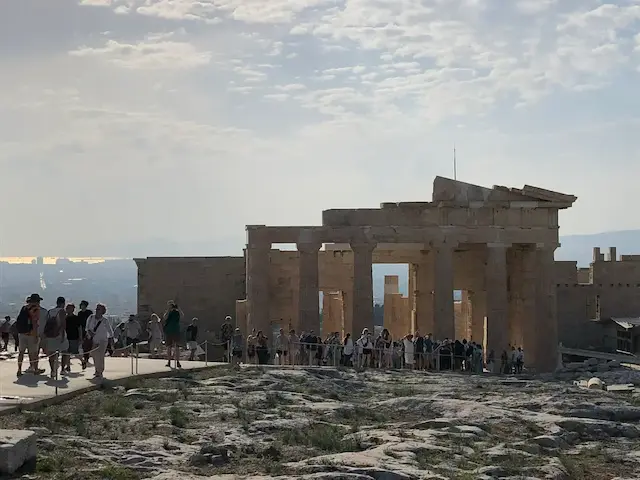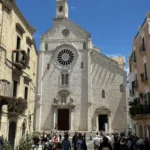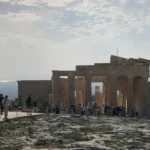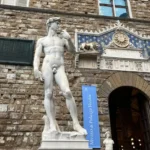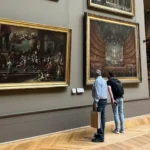If you’re planning a trip and wondering which art museum Athens has to offer is worth your time—this list has you covered. I’ve wandered through the city with sore feet and an overloaded camera roll, chasing that feeling you get when art actually moves you, not just something you check off a travel list.
The good news? Athens has a lot to offer when it comes to art—ancient, modern, and everything in between. Whether you’re into classical sculpture, moody oil paintings, or video installations that make you question reality (in a good way), there’s something here that’ll stick with you. These are the places that left a mark on me, and I think they might do the same for you.
1. Parthenon & Acropolis Museum – A Perfect Start for Culture Lovers



I’ll be honest—when I was visiting Athens, I actually thought about skipping the Parthenon. The heat was brutal, and I knew the climb from the bus stop to the top wasn’t exactly short. But thank goodness I didn’t. I pushed through and finally made it, and it was absolutely worth it.
If you’re into history, art, or just amazing views, starting your Athens trip with the Parthenon and the Acropolis Museum is a great idea. This iconic site is not only a historical wonder but also one of the most unique art museum experiences in Athens, blending archaeology, architecture, and ancient sculpture all in one.
The Parthenon sits on top of a rocky hill right in the middle of the city, and it’s hard not to feel a little awestruck when you see it up close. I remember walking up there on a scorching afternoon, thinking I knew what to expect—but nothing really prepares you for how massive and powerful it feels in real life.
Built in the 5th century BCE for the goddess Athena, the Parthenon has seen a lot and changed many times over the centuries. You’ll learn more about all of that later in the Acropolis Museum. But even before that, just standing in front of it and looking out over Athens feels kind of magical.
So what exactly is the Parthenon? It was a temple dedicated to Athena, the patron goddess of Athens, built during the city’s golden age. Made almost entirely of white marble from Mount Penteli, it was designed to show off the power, wealth, and artistic skill of the Athenians and it really did. One cool fact: the huge stones were put together without any kind of glue or cement. The pieces were cut so precisely, they held together just by their own weight.
The Parthenon also used clever design tricks to look more balanced—like slightly curved lines and tilted columns that make the structure appear perfectly straight to the human eye. And it didn’t always look so plain! Back then, it was painted in bold colors, decorated with detailed sculptures, and inside stood a 12-meter-tall statue of Athena made of gold and ivory. It wasn’t just a building, it was a bold, beautiful symbol of Athens at its peak.
Tips from Artsy Trips. As you explore the top of the Acropolis, don’t miss the Erechtheion, just a short walk from the Parthenon. That’s where you’ll find the Caryatids—those beautiful female figures that serve as columns on the south porch. They’re probably one of my favorite parts of the site. Even though the ones outside are replicas (the real ones are safely kept in the Acropolis Museum), they still feel incredibly graceful and full of personality. Around the hill, you’ll also come across other important ruins like the Temple of Athena Nike and the Propylaea, the grand entrance to the Acropolis. All these buildings together make the site feel like a giant open-air museum and it’s pretty amazing how much of it is still standing after all this time.
After soaking up the views and snapping too many photos, I headed down to the Acropolis Museum. The museum is bright and modern—though I’ll admit, I sometimes found it a little tricky to figure out where one exhibition ended and another began. Maybe that’s just me getting lost again. Still, the collection is amazing. You get to see sculptures, pottery, and original pieces from the Parthenon up close, which really brings the history to life. I especially loved the top floor, where the sculptures are arranged just like they were on the actual temple. You can even look out the glass walls and see the real Parthenon in the distance. That mix of ancient and modern is really powerful.



One of the most surprising things I learned at the Acropolis Museum was that the statues and sculptures from the Parthenon weren’t always the plain white marble we see today. They were originally painted in vibrant colors, which made the figures feel much more alive. Even more intriguing, recent studies suggest these statues may have been perfumed. Ancient Greeks would anoint them with scented oils as part of religious rituals, making the experience of viewing the art a multisensory one.
Tips from Artsy Trips. What I truly recommend doing in the museum is taking a moment to sit down and watch the short documentary about the Parthenon’s history. It’s very visual, super informative, and honestly helped me understand how the temple changed over time—how it was built, used, damaged, and repurposed through different eras. Seeing those changes come to life on screen made it much easier to imagine the Parthenon not just as a ruin, but as something people actually used and experienced.
If you only have time for one deep dive into ancient Greek culture, this combo is it. You’ll leave with a whole new appreciation for how much art, design, and creativity meant to the people who built this city.
2. Benaki Museum – A Journey Through Greek Art and Identity



After diving deep into ancient times at the Acropolis Museum, I wanted to see how Greek art evolved beyond marble temples and mythological gods. That’s where the Benaki Museum comes in. Housed in a beautiful neoclassical mansion just off the National Garden, this museum felt more like visiting someone’s incredibly curated historic home than a typical gallery space—and I loved that about it.
The Benaki Museum takes you on a journey through Greek history, from ancient artifacts to Byzantine icons, and even 20th-century art and design. What makes it so special is how it blends everyday objects—like pottery, textiles, furniture, and religious items—with fine art. You really start to see how Greek identity has shifted and grown over the centuries, not just through wars and politics, but through craft, style, and culture.
One thing that really caught my eye was the collection of traditional vases and other ceramics. The shapes, earthy tones, and painted motifs are full of symbolism and stories, from mythological scenes to everyday life. Seeing them up close made me appreciate just how much skill and meaning went into these objects. It reminded me that art isn’t always loud or monumental, sometimes it’s quiet, functional, and just as powerful.
I was also fascinated to learn that some of the objects in the Benaki Museum, like vases and decorative items, show how people in ancient Greece traded with places like Egypt and the Near East. It’s pretty amazing to think that something made in Greece could end up so far away, or that Greek artists were inspired by styles from other cultures even thousands of years ago.
But the Benaki Museum isn’t just about ancient Greece—although I really loved the Prehistoric, Ancient Greek, and Roman Collections. You’ll also find fascinating sections on Byzantine and Post-Byzantine Art, Islamic Art, and Modern Greek Art, all of which are absolutely worth your time. Some pieces even surprised me—like the meticulously reconstructed wood-carved reception room from an 18th-century mansion in Kozani, northern Greece. Still, I have to admit, I visited the museum mainly for the ancient collections, since that was my focus this time.
Tips from Arsy trips. If you’re like me and appreciate a good rooftop café after a museum visit—don’t miss the one here. You’ll get a lovely view over Athens, perfect for relaxing and processing everything you’ve just seen—or just simply go there to stroll and snap a photo (as I did).
If you’re looking for an art museum in Athens that gives you a wider view of Greek creativity through the ages, not just the famous statues and temples, the Benaki is a must.
P.S. I know some travel sites recommend the Museum of Cycladic Art, and it does look beautiful, but I ended up skipping it. While it focuses on early Cycladic civilization, which is part of ancient Greek history, the collection is quite narrow and the museum itself is much smaller. Since my goal this time was to explore ancient and prehistoric Greece more broadly, and the Benaki Museum already covers that (plus so much more), I felt like it was more than enough for one trip.
3. National Gallery – Quiet Power and Bold Greek Paintings
The National Gallery in Athens isn’t the kind of place that overwhelms you the moment you walk in. It’s quieter than that, more thoughtful. Still, if you’re visiting for the first time, you’ll likely hear about a handful of key works. El Greco’s Concert of Angels is widely considered a highlight, along with iconic 19th-century paintings like Nikolaos Gyzis’s The Betrothal of the Children, Theodoros Vryzakis’s Exodus from Messolonghi, and Georgios Iakovidis’s Grandma’s Favourite. These are among the museum’s most frequently mentioned masterpieces, though, to be honest, there’s no universal agreement on what the definitive top three should be. But the works that left the strongest impression on me weren’t necessarily the most talked about.
The National Gallery might not be the largest or most famous museum in Athens, but it’s the one that stayed with me. Reopened in 2021 after years of renovation, the museum is light-filled and spacious, with clean lines, warm stone, and open galleries that never feel crowded. It’s elegant without being cold. Each floor flows naturally into the next — from 19th-century academicism to early modernism to post-war abstraction — and the layout encourages lingering, not rushing. There’s even a rooftop café if you need time to process what you’ve seen.
While the museum holds many celebrated pieces — from portraits by Parthenis and Papaloukas to emotionally charged mythologies by Bouzianis — the paintings that resonated most with me weren’t necessarily the ones in the guidebooks.



Panayiotis Tetsis’s Laiki Agora (1979) immerses you in the heat and rhythm of a bustling Athenian market. The large canvas dominates the room, surrounding you with a blur of motion and saturated color. This isn’t a quiet or staged scene—it’s alive with noise, chatter, and midday light. Tetsis uses bold, unblended brushstrokes and expressive gestures to turn a simple street market into a full sensory experience. You can almost feel the heat rising from the pavement and hear the buzz of voices. It’s everyday life, elevated into something urgent and unforgettable.
Then there’s The Straw Hat (1925), by Nikolaos Lytras, a defining work of Greek expressionism. It radiates stillness and sunlight — a young girl seated in a courtyard, her wide-brimmed hat catching the glow. But beneath the calm surface, the painting pulses with energy. The brushwork is loose and tactile, full of momentum. You can almost smell the hot dust in the air. As one writer aptly puts it, “you can almost feel the heat, can’t you?” The painting draws you in with its “cool colours pooled at the bottom of the canvas; while the warm orange-yellow hues congeal at the top,” leading the eye through “sweeping, viscous brush strokes to a closed horizon.” It’s not just a portrait, it’s a moment suspended in paint. The bold, textured application and vibrating contrast between color zones reminded me, unexpectedly, of Van Gogh’s post-impressionism — not in subject, but in urgency, in the need to translate feeling through color.
And of course, there’s Concert of Angels (1608) by El Greco, one of the museum’s most iconic works and a masterpiece of Spanish Mannerism with deep ties to Byzantine mysticism. It captures a celestial choir in full rapture — elongated figures, swirling drapery, and a luminous palette that seems to shimmer from within. Though believed to be a fragment of a larger composition, possibly an Annunciation, it stands alone in its intensity. The angels are not passive; they twist and lean, caught mid-note, their expressions a blend of ecstasy and solemnity. El Greco merges the mystical and the physical in a way that no other painter quite manages. You stand before it, and the silence around you starts to ring. As the museum tells, It is one of the very last works painted by Greco shortly before he died in Toledo in 1614.
These may not all be listed as the top three in any official brochure, though Concert of Angels certainly is, but they’re the ones I keep coming back to. If you’re looking for an art museum in Athens that doesn’t just display Greek art, but lets you feel its evolution, weight, and soul — this is the one.
4. EMST – Athens’ Contemporary Art Scene in Full Force
The National Museum of Contemporary Art, or EMST, doesn’t offer a polished or predictable museum experience. It’s chaotic at times, disorienting even, but that’s part of its appeal. Instead of grand oil paintings or historic timelines, you get a raw, open-ended encounter with how artists today are responding to the world around them.
I’ll admit: I don’t usually seek out contemporary art museums. I’m not particularly knowledgeable about the field, and it’s rarely my first stop in a new city. But if you’re interested in seeing how a more experimental art museum in Athens approaches culture, politics, and identity, EMST is worth the time.
Housed in a converted 1960s Fix beer factory, the space still feels industrial — concrete, steel, open volumes. It’s not designed to be elegant. It’s designed to hold tension, noise, contradiction. The permanent collection includes over 170 works from Greek and international artists, spanning installation, video, sound, sculpture, photography, and mixed media. There’s very little painting in the traditional sense. Instead, the focus is on experience — often immersive, sometimes minimal, always intentional.

Themes run deep: migration, identity, memory, faith, crisis, resistance. Works like Emily Jacir’s The Tent (personal highlight for me) stand out as emotional and conceptual anchors, exploring exile and collective trauma through personal stories and sensorial form.
Some rooms are quiet. Others echo with flickering screens and layered sound. One piece might pull you into its rhythm, while another throws you off-balance. There’s no single way to move through the space. It’s nonlinear, and that’s the point — the museum trusts you to find your own way through.
What I found refreshing is that EMST doesn’t overexplain. It gives you enough context to enter, then lets you form your own questions. Greek artists are present throughout, offering perspectives shaped by political histories, borderlines, and cultural complexity. But the conversation is global and urgent.
In the end, EMST isn’t about clarity or resolution. It’s a strange, layered, sometimes overwhelming place but one that stays with you. And in a city so steeped in history, it’s a vital counterpart to the more classical art museums in Athens, offering a glimpse of where art is going, not just where it’s been.
5. National Archaeological Museum – Ancient Greece in All Its Glory



The National Archaeological Museum in Athens is not what I’d usually classify as an “art museum”, at least not in the modern, gallery-focused sense. But it absolutely earns its place among the essential art museums in Athens. This is where you go not to contemplate a single painting, but to feel the entire weight of a civilization through its objects: statues, tools, gold, stone, clay, fragments — some eerily intact, others broken in the most beautiful way.
The museum itself is massive. Room after room, era after era — Neolithic, Mycenaean, Classical, Hellenistic. You don’t walk through it so much as you surrender to it. It’s easy to get lost here, but that’s not a bad thing. If you’ve ever wanted to see the real “greatest hits” of Greek archaeology, this is the place.
There’s the Mask of Agamemnon, unearthed in Mycenae, staring back at you from 3,500 years ago, impossibly detailed and golden. It’s not actually Agamemnon (despite the name), it predates him by a few centuries, but that hardly matters.The sheer fact that this mask survived in a royal grave for over three millennia, delicate facial features, eyebrows, even a faint mustache, is astonishing. It feels like something that shouldn’t exist outside of mythology.
Then you step into the room with the Thera frescoes, and it’s like walking into a completely different kind of history. These wall paintings, buried by the volcanic eruption that preserved the ancient city of Akrotiri, are shockingly modern. You see swallows in mid-flight, boys boxing, saffron gatherers, bright fields of lilies, all painted with a kind of freedom and grace that makes you forget how old they are. They’re 3,600 years old, but somehow still feel alive.
And then there’s the bronze statue of Poseidon or maybe it’s Zeus, no one can say for sure. Either way, it’s pure kinetic energy in sculpture. Arms extended, muscles tensed, one leg forward. it looks like it could launch its missing weapon any second. Pulled from the sea near Cape Artemision, it’s one of those pieces that forces you to stop, stare, and recalibrate what you thought ancient art could do.
One object that stood out for different reasons was the Epinetron of Aphrodite, a beautifully painted, curved terracotta piece once used by women to prepare wool. It’s delicate, practical, and decorated with images of the goddess herself. Not dramatic, not monumental, but it quietly speaks volumes about domestic life, beauty, and ritual.
Tips from Artsy Trips. If you’ve already been to the Acropolis Museum, you might wonder if this one adds anything new. The answer is: absolutely. While the Acropolis Museum focuses tightly on the Parthenon and its surroundings, the National Archaeological Museum steps back and shows you the bigger picture. It’s broader, deeper, messier — a full-spectrum view of ancient Greece, from everyday life to myth, from politics to personal objects. The two museums don’t repeat each other. They complete each other.
The collection isn’t organized for Instagram. It’s not curated to make a statement. It’s just… there. Enormous, unapologetic, and unforgettable. Some rooms feel overwhelming, but when you slow down and start noticing details like a hairpin, a horse’s leg, a half-erased inscription — the past stops being distant. It becomes tactile.
I wouldn’t call this museum “easy,” but it’s essential. And while I came for the art museums of Athens, this one reminded me that art doesn’t begin with paintings. It begins with humans trying to leave something behind, something worth being remembered.
Athens can be a lot—hot, loud, ancient, overwhelming—but its art museums? Totally worth the time. Whether you’re cooling off among marble goddesses or standing in front of something abstract and confusing (in a strangely emotional way), there’s an art museum Athens offers for every kind of traveler.
I didn’t take any guided tours myself, I like to wing it and see where the art takes me but if you prefer a bit more structure (and less time trying to read those tiny wall texts), I’ve added a few tour options below. They’re affiliate links, so if you book through them, it helps support the blog—no extra cost to you, just a little love for Artsy Trips.
Now go get lost in some art—and maybe also in the museum layout. It happens to the best of us.
You may also like

